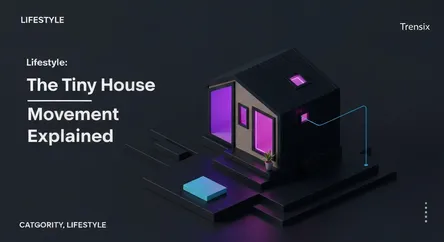Lifestyle
The Tiny House Movement Explained

Discover the tiny house movement. Learn why people are choosing to downsize for financial freedom, a simpler lifestyle, and a smaller carbon footprint.
What is it?
A tiny house is a small dwelling, typically under 500 square feet, representing a significant architectural and social movement. These homes prioritize hyper-efficient design and minimalist living over sheer size. They can be built on a permanent foundation or, more commonly, on a trailer, giving them mobility. The core philosophy is to live simply and intentionally in a well-designed space that contains everything you need without the financial and physical burden of a traditional-sized home, encouraging a life with less clutter and more freedom.
Why is it trending?
The tiny house movement is surging in popularity due to a confluence of economic, environmental, and cultural factors. Financial freedom is a primary driver; with a much lower cost, owners can reduce or eliminate mortgage debt, freeing up income for travel and other pursuits. Environmentally, a smaller home has a significantly reduced carbon footprint. Culturally, there's a growing desire to reject consumerism in favor of a simpler, more experience-rich lifestyle. The rise of remote work has also made the nomadic potential of a tiny house on wheels more appealing than ever.
How does it affect people?
Adopting a tiny lifestyle has a profound impact. It forces individuals to critically evaluate their possessions and downsize dramatically, leading to a more intentional and less materialistic way of life. This often results in lower stress levels and increased financial flexibility. However, it's not without challenges. Navigating complex and often restrictive zoning laws can be a major hurdle. The limited space also requires significant adjustments to daily routines, and can be challenging for couples, families, or those who entertain guests frequently, demanding a new approach to personal space and cohabitation.